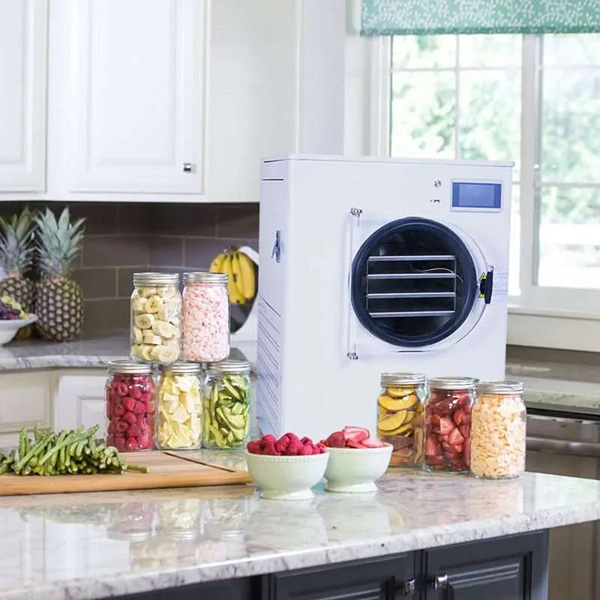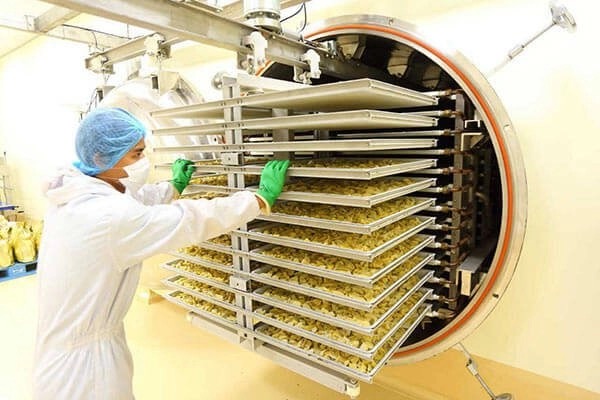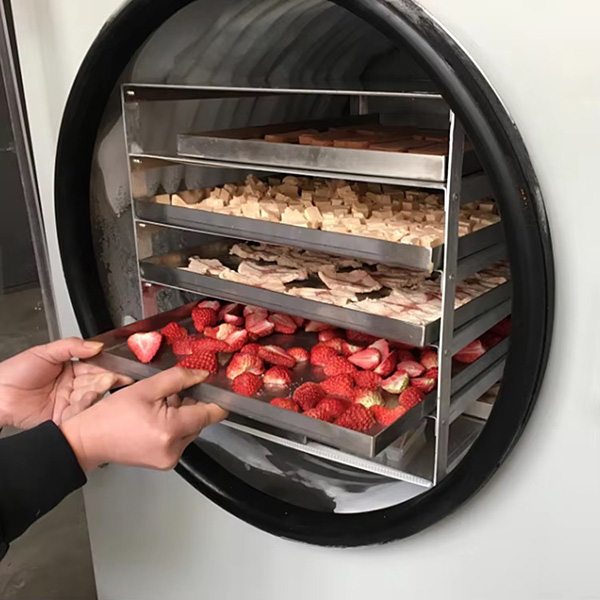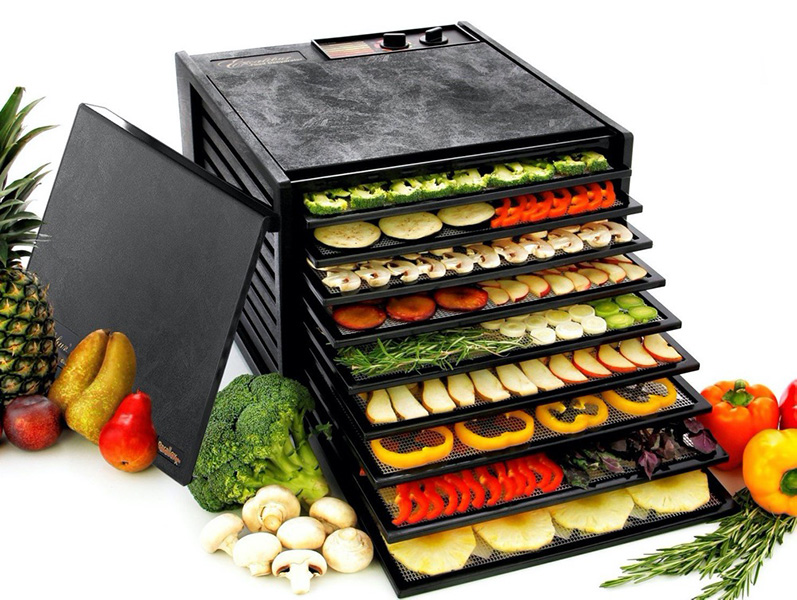
Content Menu
● Introduction
● Understanding Dry Food Packing Machines
>> Key Components of a Dry Food Packing Machine
● Types of Dry Food Packing Machines
>> 1. Vertical Form Fill Seal (VFFS) Machines
>> 2. Multi-Head Weigher Packing Systems
>> 3. Auger Fillers
>> 4. Volumetric Cup Fillers
● Benefits of Using Dry Food Packing Machines
● Choosing the Right Dry Food Packing Machine
● Innovations in Dry Food Packaging Technology
>> 1. Smart Packaging Solutions
>> 2. Sustainable Packaging Options
>> 3. Advanced Sealing Technologies
>> 4. Modular Design
● Maintaining Your Dry Food Packing Machine
● The Future of Dry Food Packaging
● Case Studies: Successful Implementation of Dry Food Packing Machines
● Conclusion
● Frequently Asked Questions
>> 1. What types of dry foods can be packaged using a dry food packing machine?
>> 2. How do I determine the right size of dry food packing machine for my business?
>> 3. Can dry food packing machines handle different types of packaging materials?
>> 4. How do dry food packing machines ensure accurate product weight in each package?
>> 5. What are the key maintenance requirements for a dry food packing machine?
Introduction
In today's fast-paced food industry, efficiency and precision are paramount. Dry food packing machines have emerged as indispensable tools for businesses looking to streamline their packaging processes, ensure product freshness, and meet the ever-growing demand for packaged dry foods. From snacks and cereals to pet food and powdered beverages, these versatile machines are transforming how we package and distribute a wide array of dry food products.
Understanding Dry Food Packing Machines
Dry food packing machines, also known as dry food packaging machines or dry food bagging equipment, are sophisticated pieces of machinery designed to automate the process of measuring, filling, and sealing packages with dry food products. These machines come in various types and sizes, catering to different production scales and specific packaging needs.
Key Components of a Dry Food Packing Machine
1. Hopper: Stores and feeds the dry food product into the machine.
2. Weighing system: Ensures accurate portioning of the product.
3. Filling mechanism: Dispenses the measured product into packaging.
4. Sealing unit: Closes and seals the package.
5. Conveyor system: Moves packages through different stages of the process.
6. Control panel: Allows operators to adjust settings and monitor the process.
Types of Dry Food Packing Machines
1. Vertical Form Fill Seal (VFFS) Machines
VFFS machines are among the most popular types of dry food packing machines. They create bags from a flat roll of film, fill them with product, and seal them in a continuous vertical process.
2. Multi-Head Weigher Packing Systems
These systems use multiple weighing heads to achieve high-speed, accurate filling of packages. They're ideal for products with varying piece sizes, such as nuts or dried fruits.
3. Auger Fillers
Auger fillers are perfect for powdered or fine granular products. They use a rotating auger to dispense precise amounts of product into packages.
4. Volumetric Cup Fillers
These machines use pre-set volume cups to measure and dispense dry products, making them suitable for products with consistent density.

Benefits of Using Dry Food Packing Machines
Implementing dry food packing machines in your production line offers numerous advantages:
1. Increased efficiency: Automate the packaging process, significantly reducing labor costs and increasing production speed.
2. Improved accuracy: Ensure consistent package weights and reduce product waste.
3. Enhanced hygiene: Minimize human contact with food products, reducing contamination risks.
4. Versatility: Many machines can handle various product types and package sizes with minimal adjustments.
5. Quality control: Maintain consistent package appearance and seal integrity.
6. Cost-effectiveness: Despite the initial investment, these machines often lead to long-term cost savings through increased productivity and reduced waste.
Choosing the Right Dry Food Packing Machine
Selecting the appropriate dry food packing machine for your business depends on several factors:
1. Product characteristics: Consider the size, shape, and flow properties of your dry food product.
2. Production volume: Determine the required output capacity to meet your production goals.
3. Packaging type: Decide on the type of packaging material and style you want to use.
4. Available space: Ensure you have adequate floor space for the machine and associated equipment.
5. Budget: Balance the initial investment with long-term benefits and ROI.
6. Flexibility: Consider whether you need a machine that can handle multiple product types or package sizes.
Innovations in Dry Food Packaging Technology
The dry food packaging industry is constantly evolving, with new technologies emerging to meet changing market demands:
1. Smart Packaging Solutions
Integration of IoT (Internet of Things) technology allows for real-time monitoring of packaging processes and predictive maintenance.
2. Sustainable Packaging Options
Many modern dry food packing machines are now compatible with eco-friendly packaging materials, responding to the growing demand for sustainable solutions.
3. Advanced Sealing Technologies
Innovations in sealing mechanisms, such as ultrasonic sealing, provide stronger, more reliable package closures while reducing energy consumption.
4. Modular Design
Some manufacturers are developing modular dry food packing machines that can be easily reconfigured to handle different products or packaging styles.

Maintaining Your Dry Food Packing Machine
Proper maintenance is crucial for ensuring the longevity and optimal performance of your dry food packing machine:
1. Regular cleaning: Thoroughly clean all product contact surfaces to prevent contamination and buildup.
2. Scheduled inspections: Regularly check for wear and tear on critical components.
3. Lubrication: Keep moving parts properly lubricated to reduce friction and wear.
4. Calibration: Regularly calibrate weighing systems to maintain accuracy.
5. Operator training: Ensure all operators are well-trained in machine operation and basic maintenance procedures.
The Future of Dry Food Packaging
As technology continues to advance, we can expect to see further innovations in dry food packing machines:
1. Artificial Intelligence: AI-powered systems may optimize packaging processes in real-time, adjusting to variations in product characteristics or environmental conditions.
2. Augmented Reality: AR technology could assist in machine maintenance and troubleshooting, providing operators with visual guidance.
3. Nano-technology: Advanced materials may lead to packaging that extends product shelf life or indicates freshness.
4. 3D Printing: Custom parts for dry food packing machines could be produced on-demand, reducing downtime for repairs.
Case Studies: Successful Implementation of Dry Food Packing Machines
Let's look at a few examples of businesses that have benefited from implementing dry food packing machines:
1. A small artisanal granola company increased its production capacity by 300% after investing in a vertical form fill seal machine, allowing them to expand into new markets.
2. A large pet food manufacturer reduced packaging errors by 95% and increased overall efficiency by 40% with the introduction of a multi-head weigher packing system.
3. A spice packaging company was able to reduce labor costs by 60% and improve product consistency by implementing an auger filler system for their powdered products.
Conclusion
Dry food packing machines have revolutionized the food packaging industry, offering unparalleled efficiency, accuracy, and versatility. As consumer demands continue to evolve and technology advances, these machines will play an increasingly crucial role in ensuring that dry food products are packaged safely, efficiently, and attractively.
Whether you're a small startup or a large-scale food manufacturer, investing in the right dry food packing machine can significantly impact your business's productivity and bottom line. By understanding the various types of machines available, staying informed about the latest innovations, and maintaining your equipment properly, you can ensure that your packaging process remains at the cutting edge of the industry.

Frequently Asked Questions
1. What types of dry foods can be packaged using a dry food packing machine?
Answer: Dry food packing machines can handle a wide variety of products, including but not limited to cereals, nuts, dried fruits, snacks, pet food, rice, beans, powdered beverages, spices, and granulated sugar.
2. How do I determine the right size of dry food packing machine for my business?
Answer: The right size depends on your production volume, available space, and future growth plans. Consider your current and projected output needs, the types of products you'll be packaging, and the variety of package sizes you'll need to produce.
3. Can dry food packing machines handle different types of packaging materials?
Answer: Yes, many modern dry food packing machines are designed to work with various packaging materials, including plastic films, paper, foil, and biodegradable options. However, it's important to check the specifications of each machine to ensure compatibility with your preferred packaging material.
4. How do dry food packing machines ensure accurate product weight in each package?
Answer: Most dry food packing machines use precision weighing systems, such as multi-head weighers or load cells, to measure the exact amount of product for each package. These systems are regularly calibrated to maintain accuracy.
5. What are the key maintenance requirements for a dry food packing machine?
Answer: Key maintenance tasks include regular cleaning of all product contact surfaces, inspection and replacement of wear parts, lubrication of moving components, calibration of weighing systems, and software updates. It's crucial to follow the manufacturer's maintenance guidelines and schedule regular professional servicing.












